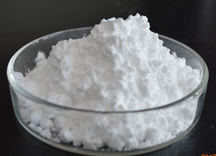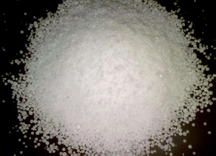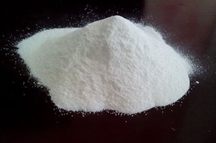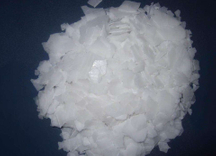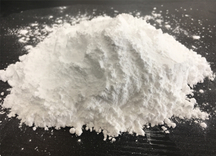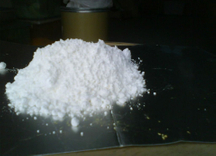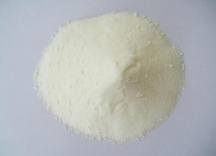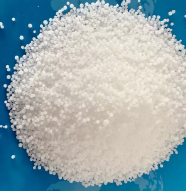
Sodium nitrite (NaNO2) is an inorganic compound that plays a critical role in various industrial applications, ranging from food preservation to corrosion inhibition. Its unique chemical properties make it a versatile and essential chemical in many sectors, especially in the fields of agriculture, pharmaceuticals, textiles, and manufacturing. This article will explore the structure, properties, features, and major industrial applications of sodium nitrite, including its role as a bleaching agent, in textile dyeing, and as a key ingredient for industrial uses.
Sodium Nitrite’s Structure
Sodium nitrite has a simple yet essential chemical structure. It consists of sodium ions (Na⁺) and nitrite ions (NO₂⁻) combined in a 1:1 ratio. The molecular formula of sodium nitrite is NaNO₂, and its structural arrangement involves a nitrogen atom bonded to two oxygen atoms in a linear fashion. The nitrite ion (NO₂⁻) carries a negative charge, while the sodium ion (Na⁺) balances this charge to form the neutral compound.
The nitrite ion itself is an interesting chemical group, with the nitrogen atom in the center bonded to two oxygen atoms, one of which is double-bonded to the nitrogen, while the other is single-bonded, forming a resonance structure. This structure gives sodium nitrite its unique properties, allowing it to act as an oxidizing agent, which is essential in many industrial processes.
Properties of Sodium Nitrite
Sodium nitrite is a white to pale yellow crystalline powder that is highly soluble in water. It is an odorless substance that, when dissolved, dissociates into sodium ions and nitrite ions. The compound is known for its strong oxidizing properties and reactivity, which make it useful in a wide range of industrial applications.
Key Properties of Sodium Nitrite:
Molecular Weight: 68.99 g/mol
Appearance: White or pale yellow crystals
Solubility: Highly soluble in water, with a solubility of 211 g/L at 20°C
Density: 2.17 g/cm³
Melting Point: 271°C (520°F)
Oxidizing Agent: Sodium nitrite can act as a mild oxidizing agent, making it useful in chemical reactions and as a catalyst in various industrial processes.
Chemical Reactions:
Reduction of Nitrites: Sodium nitrite can react with reducing agents to form nitrogen oxides, such as nitric oxide (NO) or nitrogen dioxide (NO₂).
Formation of Nitrosamines: In the presence of amines, sodium nitrite can form nitrosamines, which are compounds with potential carcinogenic effects, making the control of nitrite levels important in certain applications.
These properties are particularly significant in its role as a bleaching agent and in industrial applications, where it interacts with other chemicals to produce useful products.
Sodium Nitrite Features
The features of sodium nitrite make it highly valuable for many industrial uses. Its primary feature is its oxidizing nature, which allows it to act as a bleaching agent, disinfectant, and preservative. Here are some key features of sodium nitrite:
1. Oxidizing Agent
One of the defining features of sodium nitrite is its ability to act as an oxidizing agent. This means it can readily donate oxygen to other substances, facilitating chemical reactions that are necessary in various industries.
2. Corrosion Inhibition
Sodium nitrite is a powerful corrosion inhibitor, commonly used in water treatment and industrial systems to prevent rusting and corrosion of metal surfaces. Its ability to form protective oxide layers on metal surfaces helps extend the lifespan of machinery and infrastructure.
3. Stability in Storage
Sodium nitrite is relatively stable when stored correctly in a dry environment. This makes it easy to store and transport for use in large-scale industrial applications.
4. Versatility
Due to its unique properties, sodium nitrite finds applications across several sectors, including food preservation, pharmaceuticals, textiles, and chemical manufacturing.
Major Industrial Applications of Sodium Nitrite
Sodium nitrite is used in a broad array of industrial applications, ranging from food processing to chemical manufacturing. Here are some of the major applications:
1. Sodium Nitrite as a Bleaching Agent
Sodium nitrite is often used as a bleaching agent in various industries, particularly in the textile and paper industries. In textiles, it helps in the bleaching of fabrics, particularly in the preparation of fabrics for dyeing. It helps remove impurities and ensures a clean, uniform base for the application of dyes. Sodium nitrite for textile dyeing is particularly beneficial as it enhances the color strength and durability of the dyes used.
In the paper industry, sodium nitrite is employed to bleach wood pulp, improving the brightness of the paper. Its oxidizing properties help break down the lignin in wood, facilitating the production of white, clean paper products.
2. Sodium Nitrite for Textile Dyeing
In addition to its role as a bleaching agent, sodium nitrite is also used in textile dyeing processes. It reacts with aromatic amines to form diazonium salts, which are essential intermediates in the production of azo dyes. These dyes are used to color a wide range of textiles, from clothing to upholstery, providing vibrant, long-lasting colors.
3. Sodium Nitrite for Industrial Uses
Sodium nitrite for industrial uses is widely employed in the production of chemicals, including nitrosyl compounds and nitrosamines, which serve as intermediates in the manufacturing of a variety of products. Sodium nitrite is also used in the rubber industry, acting as a vulcanization accelerator to enhance the properties of rubber products.
In industrial water treatment, sodium nitrite is used to prevent the corrosion of metal surfaces in cooling towers, boilers, and pipes, helping reduce maintenance costs and prolong equipment lifespan.
4. Water Treatment and Corrosion Inhibition
Sodium nitrite is frequently used in water treatment to prevent corrosion in industrial systems, such as pipes and cooling towers. It helps to form a protective oxide layer on metal surfaces, which prevents rust and corrosion. This is particularly important in systems that are exposed to water or steam for long periods, where metal degradation can lead to system failures and costly repairs.
5. Sodium Nitrite in Heat Treatments & Transfers
Sodium nitrite is used in various heat treatment processes, particularly in the production of steel and other metals. It helps control the temperature and improves the overall efficiency of heat transfer in industrial furnaces. By stabilizing the temperature and preventing oxidation, sodium nitrite contributes to the production of high-quality metals used in manufacturing.
Sodium Nitrite as a Corrosion Inhibitor
As a corrosion inhibitor, sodium nitrite is essential in industries where metal surfaces are exposed to harsh environments. It is widely used in the preservation of water systems, including cooling towers, pipelines, and industrial reactors. The use of sodium nitrite in water treatment helps maintain the integrity of metal structures by preventing corrosion, reducing the need for costly repairs, and extending the lifespan of equipment.
In systems like boilers and heat exchangers, sodium nitrite is typically added to water to form a protective layer on the metal surfaces. This layer prevents rust and minimizes damage caused by oxidation. This is especially important in the chemical, petrochemical, and power generation industries, where metal corrosion can have serious consequences.
Sodium Nitrite in Heat Treatments & Transfers
Sodium nitrite plays a crucial role in various heat treatment processes used to improve the mechanical properties of metals. It is commonly used in the steel industry to improve the hardness and strength of steel and other alloys. Sodium nitrite is added to molten metals to control the temperature and enhance heat transfer. This ensures that metals are heated evenly, resulting in high-quality finished products.
In addition to its role in steel production, sodium nitrite is also used in the production of other materials, such as ceramics and polymers, where it helps regulate the temperature and prevent oxidation during processing.
Conclusion
Sodium nitrite is a versatile and essential chemical used in a wide range of industries, from food preservation and pharmaceuticals to water treatment and industrial applications. Its unique properties, including its ability to act as an oxidizing agent and corrosion inhibitor, make it invaluable in many processes. Whether used as a bleaching agent in textiles, a corrosion inhibitor in water systems, or in the production of nitrosyl compounds, sodium nitrite plays a crucial role in improving efficiency, safety, and quality across various sectors.
The future of sodium nitrite looks promising, with continued research into its applications in newer technologies and processes. As industries continue to evolve, sodium nitrite will remain a critical component in ensuring the smooth operation of industrial systems and the production of high-quality materials.











